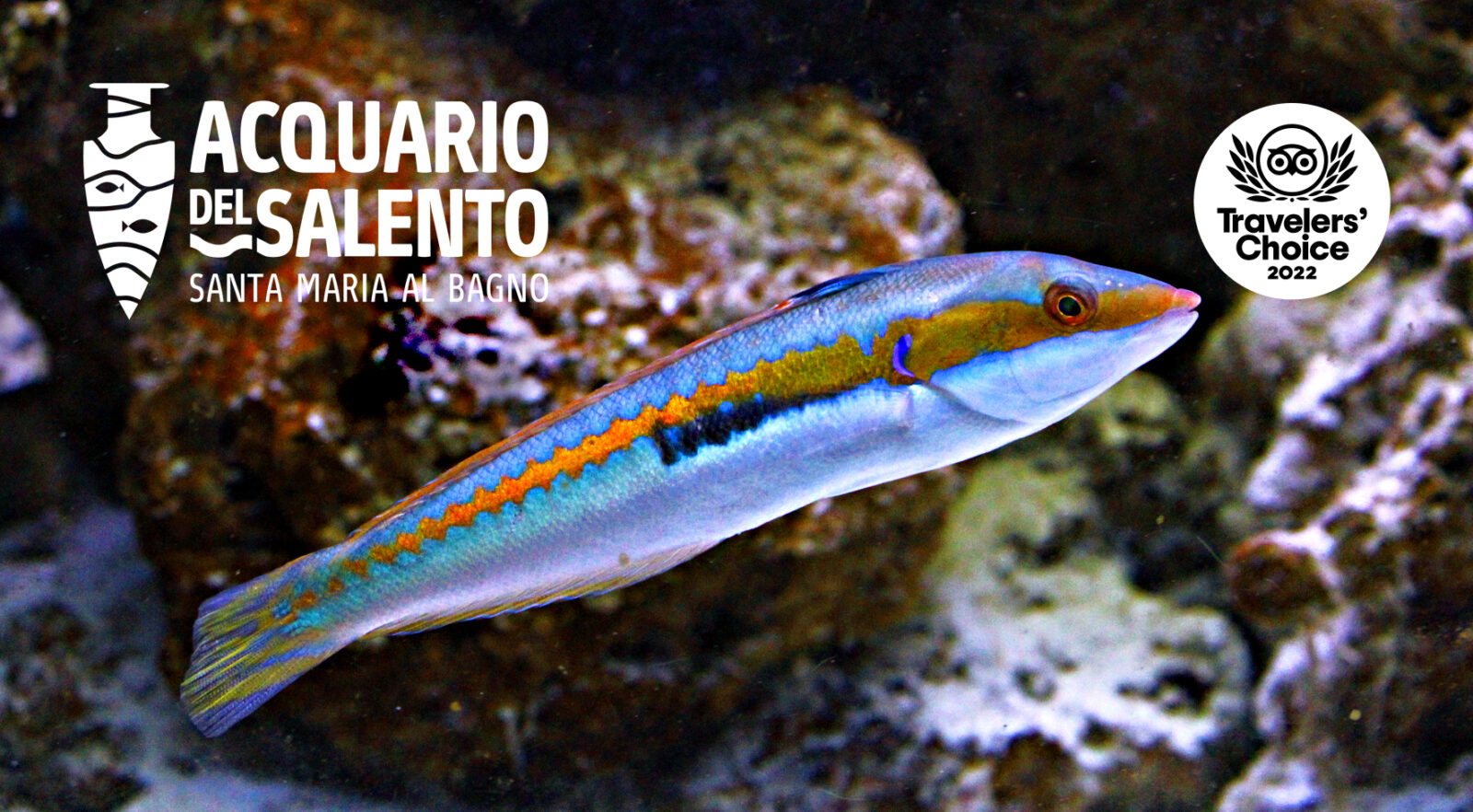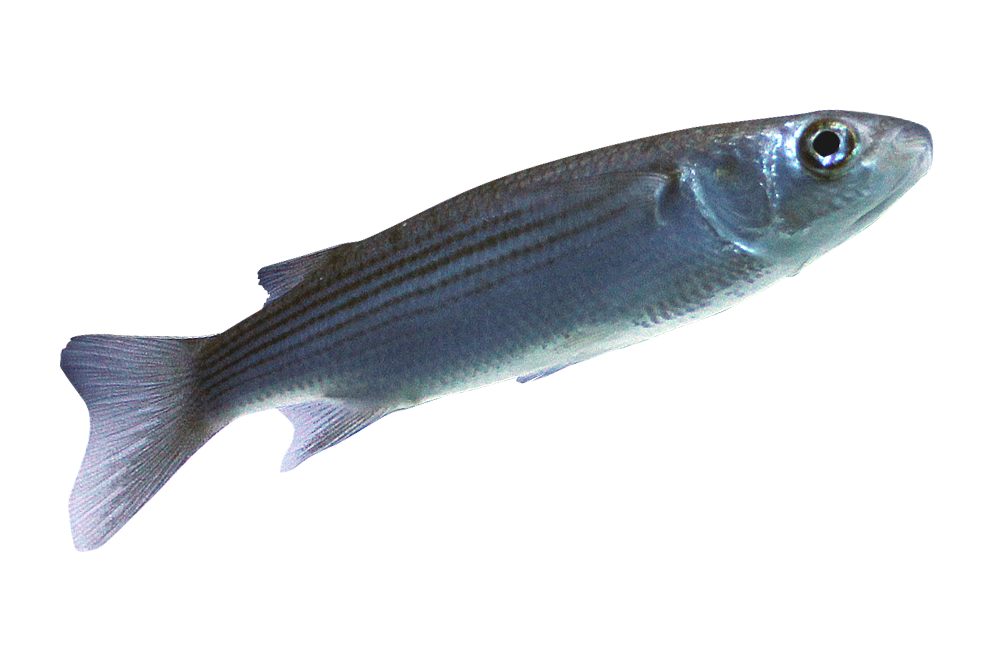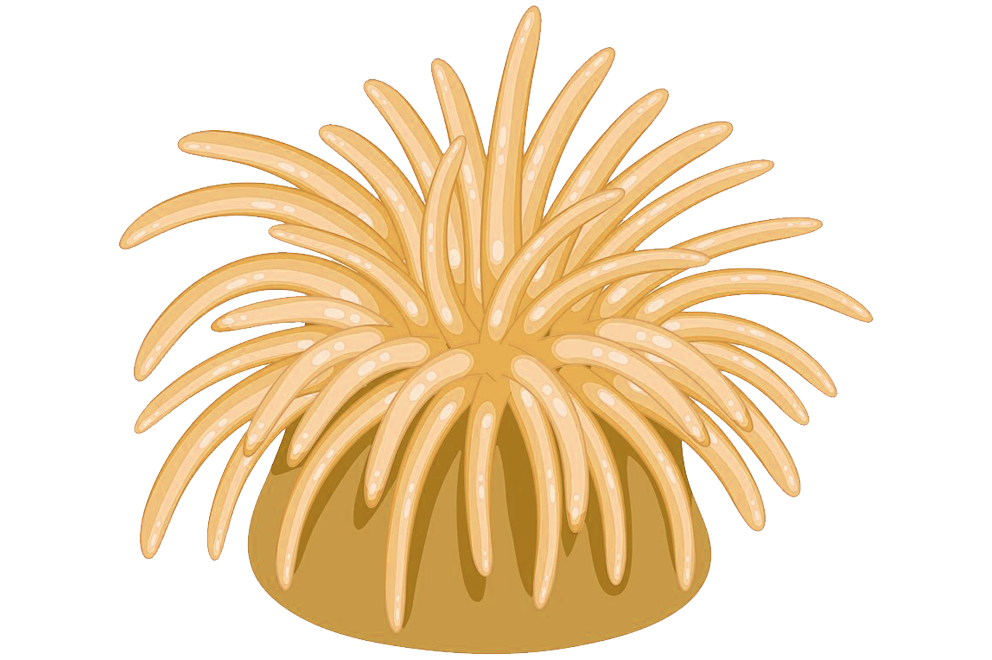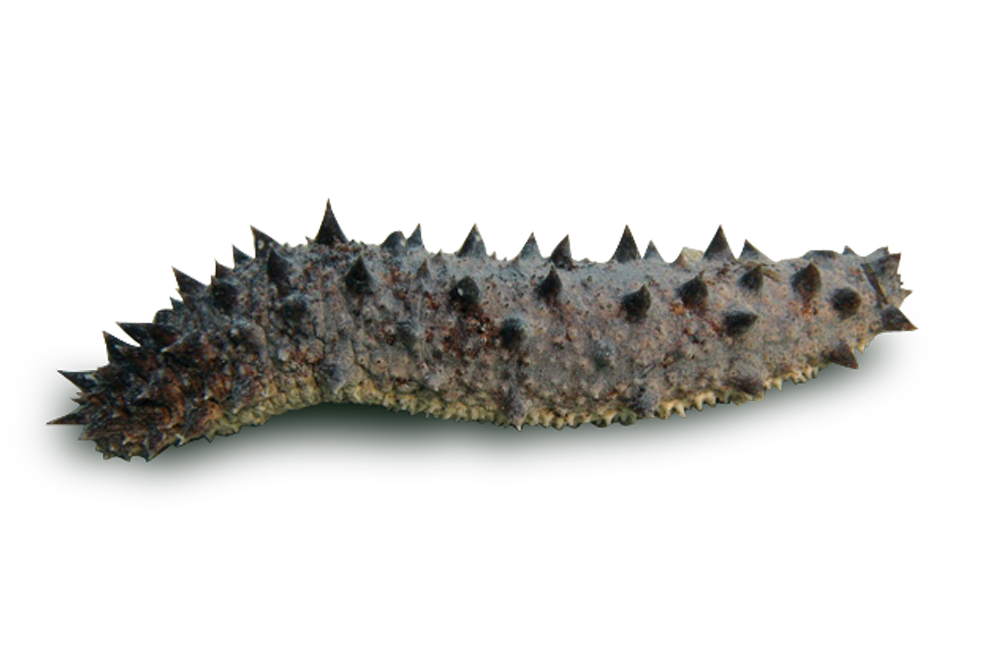THE SAND (tank 3)
Along a four-tank path, it is possible to observe the sea bottoms that characterise this particular area of Salento, which range from the sandy seabed of the first tank to some rocky environments, with life forms that inhabit the sea up to 20 m of depth. In these tanks, you can observe white and black seabreams, annular and banded seabreams, sea cucumbers, and morays. There are also ornate wrasses and rainbow wrasses. All these species show the phenomenon of hermaphroditism, as almost 100 other species of bony fish. Sand fish fill their mouth with sand eating debris rich in organisms, and then they drop the rest of the sand from the mouth or the gills. Pearly razorfish do the same thing. There is also a strange fish called red-mouthed goby, which builds a bunker to hide under the stones and some red starfish. Then we have the anemones and the cerianthus, with their stinging tentacles. The sea cucumber disinfects the sand and leaves nutrients for other animals in there, as well. So, fish go and eat there every now and then. Their poop is food for other animals.
Striped bream > A typical fish of the sand. The striped bream belongs to the phylum Chordates, subphylum Vertebrata, class Osteichthyes, order Perciformes, and family Sparidae. The Sparidae are a very common family in the Mediterranean, mostly of gregarious behaviour. They have a single dorsal fin equipped with spiny rays. The mouth is small, positioned towards the bottom of the head and is equipped with strong teeth with evident incisors and less evident canines and molars.
Common gray mullet > The common gray mullet belongs to the phylum Chordates, subphylum Vertebrata, class Osteichthyes, order Perciformes, family Mugilids. The Mugilids are distinguished by the presence of two widely spaced dorsal fins, a small mouth with very small teeth, and the absence of the lateral line (sense organ). All species of this family are well adapted to variations in salinity (euryhaline). The common gray mullet is a tireless gregarious fish when young, solitary or making up small schools in maturity.
Cylinder anemone (Cerianthus) > The membranous cerianthus, or cylinder anemone, belongs to the phylum Cnidarians, class Anthozoans, subclass Hexacorals and order Ceriantipatharia. Ceriantipatharians are solitary animals, they live their existence buried with most of the body in the sediment, exposing only the corolla of tentacles to the outside. The animal moves inside a tube, formed by a compound of its secretion and sediment. Inside the tube, the cerianthus also hides the whole corolla if disturbed, and then re-expands it outside, reinvigorating the tentacles swollen with water, ready to hunt.
Anemone (Anemonia sulcata) > The sea anemone belongs to the phylum Cnidarians, class Anthozoans, subclass Hexacorals, and order Actiniaria. Sea anemones are solitary polyps, attached – though not indissolubly – to the substratum, and they do not have their own skeleton, as for all the Actiniae. The sea anemone, better known as snake hair, is an actinia that can reach considerable size with a strong stinging power. There are many species of crustaceans and fish which, immune to its stings, find protection among its tentacles. We will often find crustaceans and gobies that spend their existence in symbiosis with the sea anemone.
Red mouthed goby (Gobius cruentatus) > The red mouthed goby belongs to the phylum Chordates, subphylum Vertebrates, class Osteichthyes, order Perciformes, and family Gobiid. The Gobiids (better known as gobies) are fish with an almost cylindrical body, a large and stocky head with a large mouth, and large protruding eyes. Gobies have a peculiar fin that forms a sort of funnel-shaped sucker on which they “rest” when stationary. The red-mouthed goby is generally solitary, but curious: it moves on the bottom of the sea with short jerks, never swimming for a prolonged time.
Sea cucumber (Holothuria tubulosa) > The holothurian sea cucumber belongs to the phylum Echinoderms and to the class Holothuroidea. Sea cucumbers can be smooth, covered with sand, with goosebumps, they can vary their texture. The sandy sausages they leave behind are their “important” poop, because it’s made of disinfected sand and nutrients intended for other species. This is one of the reason why the sea cucumber has been a protected species since december 2019. Another reason is the existence of a black market and these animals are sold to traders, who then resell them in China, where they are consumed as food.



